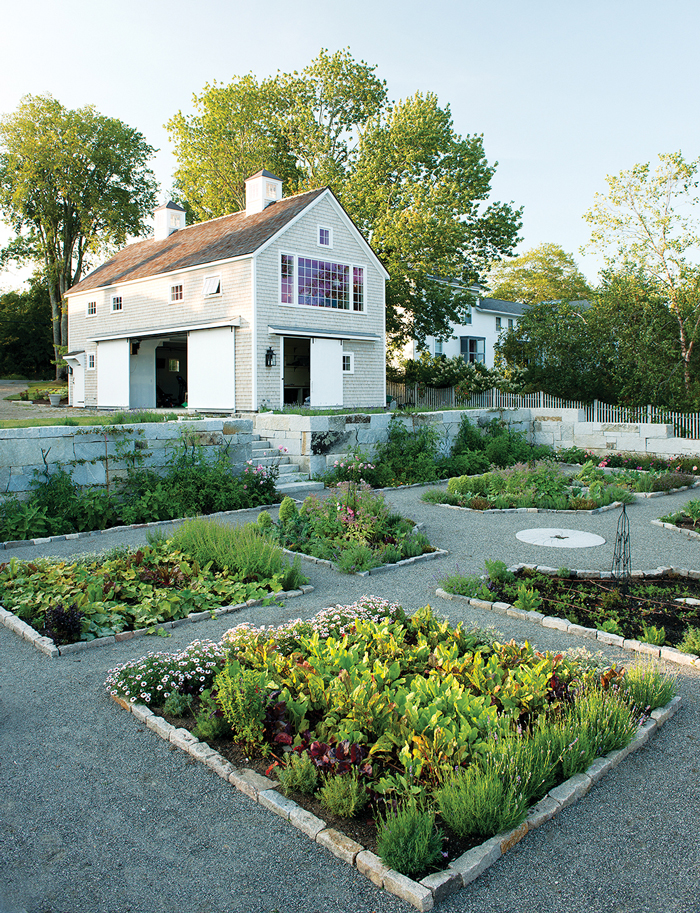A sophisticated garden yields a wholesome bounty in Castine.
By Virginia M. Wright
Photographed by Douglas Merriam
From the July 2016 issue of Down East magazine
[dropcap letter=”R”]are is the Maine garden as highly styled as Marianne Buchanan’s. Built into the sloping seaside lawn of an 1810 estate in Castine, it sits within an imposing wall of white granite blocks. Several cobblestone-bordered beds are precisely spaced along wide gravel paths and organized around an old millstone that serves as the garden’s focal point. The overall effect is ceremonious and dramatic, yet the plantings are as humble as can be: greens, leeks, zucchini, herbs, and other good things to eat.
“I love a formal vegetable garden,” says Buchanan. “I love the concept of utilitarian things being beautiful and decorative. It’s almost more interesting to me than flowers.”
A New York City native, Buchanan taught herself to garden through trial and error (and lots of how-to books) after she and her husband, Bill, moved to Connecticut, where they still live half the year. Innkeepers at the Castine Inn, they were introduced to the peninsular town of Castine by a friend 27 years ago. Their Federal-style home on Court Street, the Thomas Hale House, housed British soldiers who occupied the town during the War of 1812.
Buchanan hired Boothbay landscape architect Bruce Riddell, whose work includes several of the landscapes at Coastal Maine Botanical Gardens, to design a garden based on the traditional French potager, which mixes vegetables, herbs, fruits, and flowers in a formal arrangement. The granite wall, built from quarry remnants, is not only an aesthetic statement but also a functional element: it retains solar heat and creates a microclimate in which tomatoes, eggplants, and peppers — fruits typically challenged in cool coastal Maine — can thrive.
Flowers add splashes of color, but their role is largely a supporting one: Borage, or starflower, partners with tomatoes and squash because it deters hornworms and its bright-blue flowers attract pollinators like bumblebees. Yellow and orange marigolds pair nicely with cucumbers because they repel Japanese beetles and whiteflies. Fragrant lavender, planted along the uphill edge of the wall, keeps moths, mosquitoes, and fleas at bay.
The garden’s formal structure suits a lot drawn centuries ago when the Castine settlement was new, Buchanan believes. “This is a place that’s been tended for hundreds of years now,” she says. “It calls for a certain sensibility.”











